When the Spanish came to conquer the New World in the 1400s, they did more than war with native cultures and ransack their gold. They also brought horses with them—special gaited horses that would go on to populate the Americas and become the ancestors of nearly all of today’s modern horse breeds of South America and North America.
Historians believe the Jennet was the mount the Spaniards brought with them when they began colonizing Venezuela. The breed eventually spread throughout South America and became the ancestor of four of the continent’s most well-known breeds.
Paso Fino
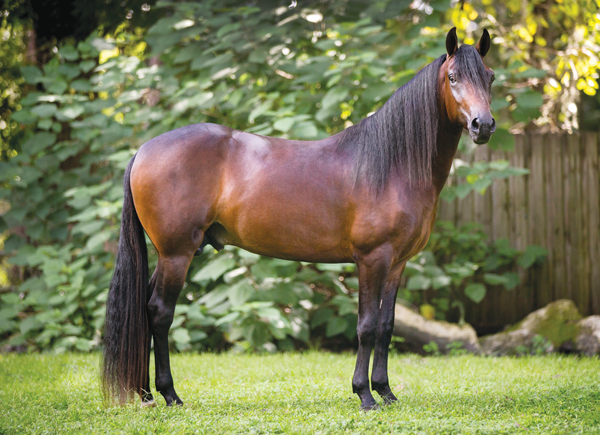
The Paso Fino has its roots in the country of Colombia, where it was developed in the 1500s from horses brought to the Dominican Republic, Cuba and Jamaica by the Spanish conquerors. Christopher Columbus helped establish a breeding program on these islands with the goal of supplying the Spanish soldiers with horses. These carefully bred horses were then brought to both Puerto Rico and Colombia.
The genes of the Jennet gave the early Paso Finos a smooth gait. Crossings with Barbs and Andalusians added a very distinct look. Two different varieties emerged as a result of the breed’s geographical separation: a Colombian type and a Puerto Rican type. Both were bred in South America and on various islands.
In the early 1950s, members of the U.S. armed forces stationed in the West Indies began to bring Paso Finos home with them. By the 1970’s, importing Paso Finos from Colombia became popular with American horse lovers. As a result, many of the Paso Fino horses living in the U.S. today have Colombian bloodlines.
Today, the breed is treasured as a show and trail horse because of its distinct, four-beat gaits: the classic fino, the paso corto, and the paso largo. Each is progressively faster and is easy to ride.
The Mangalarga Marchador
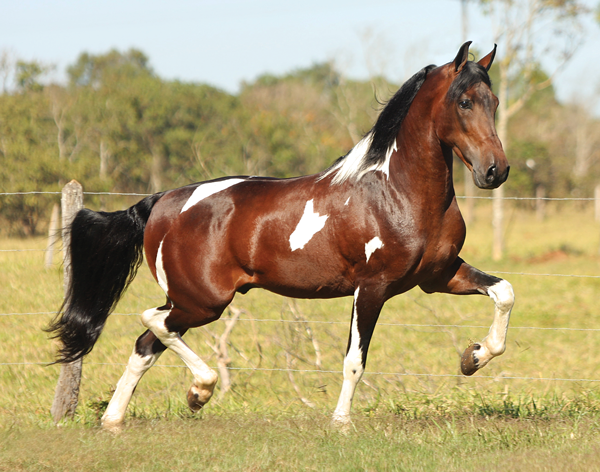
The Mangalarga Marchador is a South American breed whose history traces back to John VI, a King of Portugal. In 1807, John VI fled his native country to avoid capture by Napoleon, escaping to Brazil. Along with his family, he brought several of his horses with him.
Known as Royal Alter horses, these horses carried the blood of Andalusians and other equines native to the Iberian Peninsula, and the Madiera and Canary Islands. Developed exclusively for the king, Royal Alters were known for their elegant stature and quiet temperament.
Once in Brazil, John VI bred his Royal Alter stallions with Barb mares that had been imported from Africa. One of the results of these crossings was a stallion named Sublime, who was owned by Prince Pedro I, the future emperor of Brazil and owner of the Hacienda Camp Alegre Farm, a respected breeding operation. Pedro I crossed Sublime with Barb and Jennet mares. The resulting horses were dubbed Sublime Horses, and became known for their speed, smooth gaits and incredible stamina.
When Mangalarga Farm, a Brazilian horse breeding facility, purchased Sublime Horses and began producing them in large numbers, the breed underwent a change of name. In the 1930s, “Marchador” was added to distinguish the horse from a related breed known as the Mangalarga Paulista, which was created by crossing the Mangalarga with Thoroughbreds, Arabians and Standardbreds.
The Mangalarga Marchador is the National Horse of Brazil, but it was relatively unknown in the U.S. until the late 1990s. In 2000, the Mangalarga Marchador Horse Association of America was formed, and horses of this breed were imported in some numbers. A marketing campaign helped bring the breed to the awareness of American horse lovers.
Marchadors are born with the ability to perform the marcha picada and the marcha batida, both four-beat gaits.
The Peruvian Horse
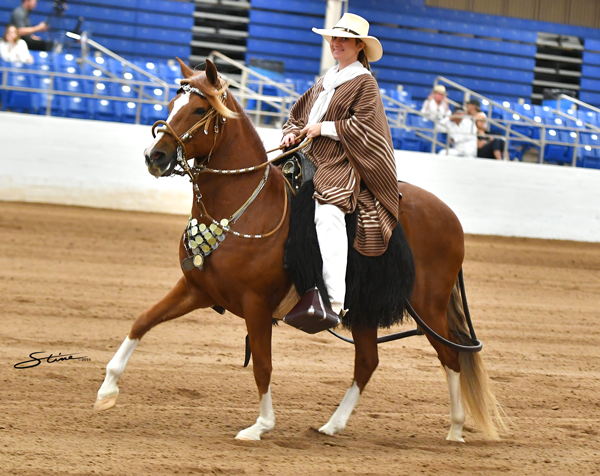
In the 1600s, Spain was still trying to establish complete control of the South American continent, and was fighting battles on many fronts. A shortage of horses resulted at a time when it was difficult to import more horses from the mother country. The horses already in Peru became isolated and bred only with each other over a period of years. These horses ultimately became the foundation stock for today’s Peruvian Horse, which is sometimes called the Peruvian Paso.
South American horseman of the time realized the value of this newly developed Peruvian Horse and began to deliberately breed them to emphasize certain characteristics, including the smoothest possible gaits. Land owners in Peru needed a horse they could comfortably ride for many miles as they surveyed their vast haciendas. The Peruvian Horse became the mount of choice for many of these wealthy land owners.
Today, the Peruvian Horse has grown beyond the borders of its native country and has become well-known in the U.S. The breed was first brought here in the 1960s, and the North American Peruvian Horse Association now has 25,389 registered horses.
Purebred Peruvian Horses are born with a natural ability to gait. The paso llano and sobreandando are two four-beat gaits that give the rider the experience of floating on air. The paso llano is the slower and more comfortable of the two, while the sobreandando has the same the footfalls but is a faster gait.
The Criollo
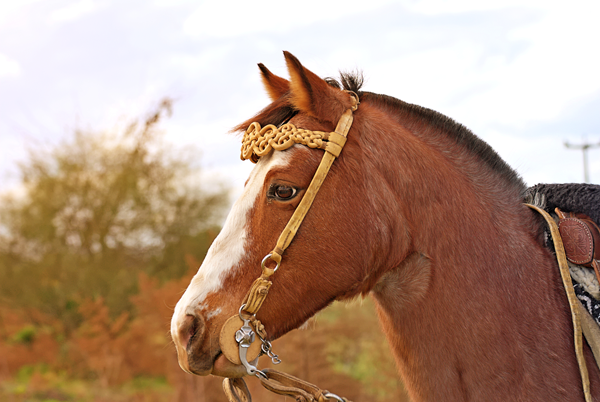
A Spaniard named Don Pedro Mendoza founded the Argentinian city of Buenos Aires in the 1500s. Mendoza owned Spanish, Barb and Portuguese horses, and when the city was set ablaze during a conflict with indigenous warriors, horses escaped into the Argentine pampas. The descendants of these escaped horses lived wild on the plains for four centuries. Because of their isolation in this rugged country, they became a distinct breed called the Criollo, known for being exceptionally hardy.
In the 19th century, South American cowboys—known as gauchos—tamed the wild Criollo horses and taught them to work with cattle. The breed remained fairly pure until the end of the century, when European and North American stallions were brought to the region.
In the early 1900s, breeders began working to save the Criollo breed from being wiped out through crossbreeding. In 1918, the Criollo was accepted into the Argentine Rural Society studbook.
Criollos are known for their exceptional endurance. The breed is popular in endurance competitions in South America, which sometimes include rides that last up to two weeks and require the horse to carry a certain amount of weight, all the while living only off the grass that grows along the route.
Individual Criollos can be found in North America, although no U.S. association for the breed currently exists. Argentina, Uruguay, Chile, Brazil, Germany and Italy all have registries for the breed.
Fast FactsPeruvian Horse Compact and elegant, Peruvians range in height from 14.1 to 15.1 hands. They have a medium-sized head with straight or slightly concave facial profile and a small muzzle. Their backs are strong, rounded and short to medium in length. The croup is long, wide and moderately sloped, and nicely rounded. The breed comes in a number of colors, including bay, black, brown, buckskin, chestnut, dun, gray, grulla, palomino and roan. North American Peruvian Horse Association United States Peruvian Horse Association Paso Fino Paso Finos stand 13 to 15.2 hands and have a straight or slightly convex facial profile. Their necks are medium in length, gracefully arched and set on an angle that allows for a high head carriage. The back is strong and muscular with a rounded croup. Every horse color can be found in the breed, including pinto patterns. American Paso Fino Horse Association Criollo Horse Criollos are typically 14 to 15 hands in height. They are muscular in appearance and have a broad chest. Their heads are medium to large in size and have wide-set eyes. Like the majority of breeds of Spanish origin, they have a sloped croup. They can be seen in bay, brown, black, chestnut, grullo, buckskin, palomino, roan, gray and pinto. Mangalarga Marchador Marchadors are typically 14.2 to 15.2 hands in height. They have a triangular, medium-sized head with a broad forehead. The chest is deep and broad, and the back medium in length and muscular. gray is the most common color in the breed, although they also come in bay, black, chestnut, dun, palomino, roan and pinto. |
This article breeds of South America appeared in the January 2020 issue of Horse Illustrated magazine. Click here to subscribe!




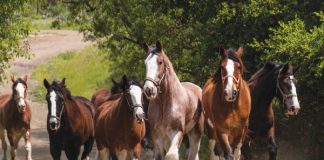

Thanks so much for this great article! I love Spanish horses, especially Paso Finos. My company features authentic, handmade tack from 4 generations of master leather craftsmen. We have beautiful bridles, reins, breast collars, curbs and nosebands made with your choice of colors for leather and trim. Our tack comes in styles for all horse breeds including: Spanish, American, Western and soon we will have English tack. We also have some great articles from breeders of the horses featured in this article. Feel free to contact us with any questions on our website: https://www.spanishhorsetack.com